Do you ever wonder about the true nature of NFTs? Furthermore, how do you make it? Despite the widespread acceptance, such questions keep baffling a significant number of potential NFT inventors. So, breathe easy if you are a creator considering entering the NFT market because this article is tailored specifically for you.
Discover the transformative world of NFT Works, unique digital assets verified by blockchain technology. Explore the impact of NFTs on art and technology industries, revolutionizing ownership and collecting digital content.
Non-fungible tokens (NFTs) are unique digital assets that reflect a particular object’s ownership or authenticity. These digital assets include different in-game objects, images, videos, or even music. In this article, you will discover everything you need to know about collecting, minting, and selling non-fungible tokens (NFTs).
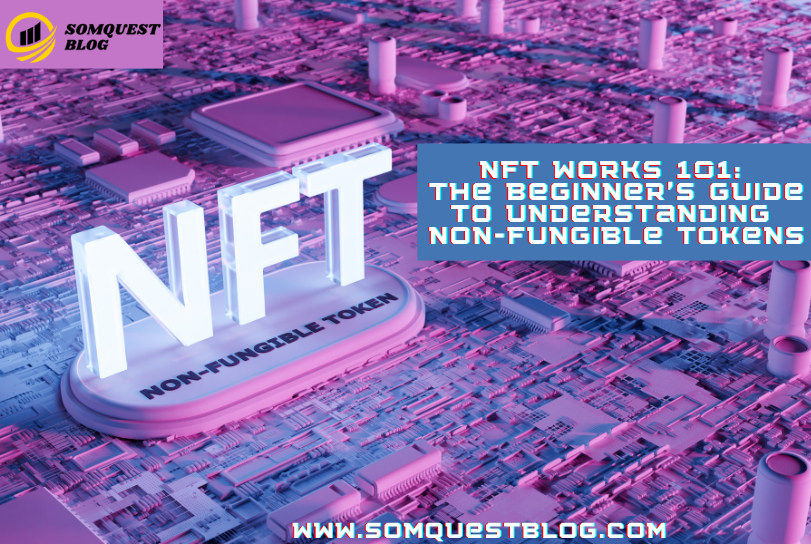
Table of Contents
Importance of NFTs
It is impossible to overstate NFTs’ significance in the modern digital era. By facilitating the safe and transparent sale and transfer of ownership rights, they allow creators to earn money from their digital works.
NFTs have also opened up new opportunities for artists, shaking the art industry. They trade hands digitally, usually with cryptocurrency, and are built on the same underlying technology.
A Brief History of NFTs

Non-fungible tokens, or NFTs, have been increasingly popular lately. Their history dates back to the beginning of the early 2010s when blockchain technology was first conceived.
The introduction of Ethereum in 2015 marked a watershed moment for NFTs. However, in 2017, the ERC-721 standard was first launched on Ethereum Blockchain for creating and managing NFTs.
NFTs are one-of-a-kind and indivisible, in contrast to fungible cryptocurrencies like Bitcoin and Ethereum. Due to their unique worth and ownership, these can represent different sorts of artwork, digital collectibles, and more.
Often considered the first big NFT success story, CryptoKitties is a blockchain-based virtual game that started in late 2017.
Using Ethereum-based NFTs, users of CryptoKitties could buy, sell, and breed digital cats with their own distinctive features. The game’s popularity caused Ethereum network congestion, showing NFTs’ potential and scalability issues.
Since then, the NFT market has multiplied. Several notable NFT sales and auctions occurred between 2020 and 2021. Twitter ex-CEO Jack Dorsey sold his first tweet as an NFT for $2.9 million. Moreover, a digital artist Beeple sold an NFT for $69 million.
Why NFTs are Important
NFTs (or non-fungible tokens) have become increasingly significant for several reasons:
Authenticity and Ownership
NFTs offer a way of establishing the authenticity of digital assets. Blockchain technology helps in verifying the ownership of an NFT. It ensures that the creator of the asset can verify that he has exclusive rights.
Digital Collectibles and Art
NFTs have brought a new era of innovation in digital collectibles and artwork. They make it possible for artists to produce one-of-a-kind works of digital art, collectibles, and virtual assets and sell them.
Moreover, NFTs allow creators to earn money from their work without going via mediators. It gives digital artists more freedom and flexibility.
Royalties and Secondary Sales
Knowing that you have an advantage over the competition is a powerful motivator. It means creators can earn revenue from every secondary market transaction involving their NFT. It ensures that artists can continue to earn money even if their work increases in value and is resold many times.
Transparency and Provenance
NFTs take advantage of blockchain technology, which is transparent and immutable. An NFT’s provenance can be verified because its ownership and transaction records are available to the public.
It is a beneficial feature to prove the authenticity of valuable assets, including art, designer products, and collectibles.
The tokenisation of Real-World Assets
NFTs can tokenise real-world assets such as intellectual property, real estate, or commodities. Hence, all the processes like ownership, transferability, and fractional ownership have become easier by recording these assets as NFTs on the blockchain. It creates new opportunities for investment, liquidity, and democratising access to formerly illiquid assets.
Understanding NFTs
What are NFTs?
NFTs use blockchain technology to verify digital asset validity and ownership. Each NFT is stored as a token on a blockchain like Ethereum with a unique identifier. This identifier includes descriptive metadata about the asset, including its characteristics, creator, and provenance.
How do NFTs work?
NFTs define terms and conditions of ownership by using smart contracts embedded in the blockchain. With the help of these contracts, the creators can specify royalties.
Thus, whenever an NFT is resold in the future, they get a percentage of their sales. That’s how an artist continues to benefit from the increasing value of his creations, even after the initial sale.
What Makes NFTs Unique?
Non-fungible tokens, or NFTs, are digital assets that stand out from others in various ways:
Indivisibility
NFTs cannot be broken into smaller units, unlike fungible cryptocurrencies like Bitcoin and Ethereum. Each NFT is a complete and independent entity for a specific asset.
Uniqueness and Authenticity
NFTs are designed to be unique. Metadata in the NFTs describes their individual characteristics like title, description, creator, and other information. Also, this metadata verifies asset authenticity and uniqueness.
Ownership and Control
NFTs can track and verify ownership on the blockchain with absolute clarity. The public ledger of NFTs shows who owns each given token. Furthermore, this ownership record cannot be changed in any way because it is immutable.
Interoperability
NFTs are portable. Therefore, they can be employed in a wide variety of contexts. ERC-721 and ERC-1155 on Ethereum are two examples of the standardisation of NFT protocols, allowing for universal portability and interoperability. As a result of this compatibility, people can buy, sell, and exchange these on any available exchange.
Royalties and Secondary Sales
Another extraordinary feature of NFTs is that it allows its creator to embed royalties in the smart contracts. Hence, he can get a percentage of the sale price whenever the NFTs are sold in the secondary market. This royalties method opens earning potential for artists and creators even after the initial sale.
Advantages of NFTs
In recent years, non-fungible tokens (NFTs) have drawn much attention and recognition. Here are some of the positive outcomes of NFTs:
Proof of Ownership
NFTs leverage the blockchain, a decentralised and publicly accessible ledger, to prove ownership. It makes it simpler for digital asset creators and collectors to verify their authenticity and ownership. Moreover, NFTs do away with the need for intermediaries by keeping track of ownership in a safe and easily verifiable way.
Empowering Creator
All the creators, like writers, artists, or musicians, got the opportunity to monetise their work directly, thanks to the NFTs. They can sell their creations by tokenising them as NFTs on different platforms. Hence, they no longer rely on traditional gatekeepers like publishing houses or art galleries.
Interoperability and Interconnectivity
NFTs allow for interoperability and interconnectivity across multiple platforms as they’re incredibly compatible with an extensive range of ecosystems. Therefore, they stand in for many different digital assets, such as artwork, music, movies, virtual properties, digital products, and more.
Transparent and Immutable History
The blockchain technology powering NFTs assures that each token’s transaction history and provenance are publicly published and cannot be altered. Hence, buyers can trust in the legitimacy and worth of NFTs because of their transparency and immutability, which discourages fraud.
Enhanced Collecting Experience
NFTs provide an exciting and creative experience for those interested in digital art and collectibles. They can use virtual exhibition environments or augmented reality (AR) settings to display, view, and trade digital assets.
In this way, NFTs can give collectors access to exclusive and engaging experiences that would otherwise be inaccessible.

How to Create NFTs?
An organised approach involves a series of steps to create an NFT. Let’s have a look at the summary of the process in general:
- You must decide first what kind of digital asset you wish to turn into a non-fungible token.
- Choose a blockchain platform like Ethereum, Binance Smart Chain, or any else that allows for the generation of NFTs.
- Set up a compatible digital wallet to manage, store, and trade NFTs.
- The process of creating and minting an NFT involves transaction fees. Therefore, you must ensure your digital wallet has enough cryptocurrency to cover those costs.
- Choose an NFT marketplace to list and sell your NFTs.
- To create or mint an NFT, look for the option on the selected marketplace. Here, you must choose a pricing tier or enter an auction format before uploading the digital file of your asset.
- You must pay a gas fee to cover the cost of processing your NFT minting transaction on the blockchain.
- Once the transaction is validated, your NFT is created and recorded on the blockchain, attesting to your ownership.
- You will get a unique token ID to prove your NFTs ownership.
- Set a price for your NFT and start marketing and selling it through social media or other relevant platforms with potential buyers.
Buying and Selling NFTs
You must get a digital wallet compatible with a blockchain platform to mint or trade NFTs. Once it’s done, you are all set to buy and sell NFTs. MetaMask, MyEtherWallet, and Trust Wallet are three of the most widely used wallets for Ethereum-based NFTs.
To set up your wallet, check the instructions given by your digital wallet provider. Choose a trustworthy NFT marketplace to buy, sell, or trade NFTs. OpenSea, Rarible, SuperRare, and NBA Top Shot are just a few examples of widely used platforms.
NFT Marketplaces
OpenSea
OpenSea is a well-renowned NFT marketplace where sellers pay 2.5% on successful sales. However, buyers also have to pay gas fees for Ethereum network transactions. According to a study, OpenSea creators earned $1.1 billion in creator fees in 2022.
Rarible
Creators can mint NFTs on this decentralised NFT marketplace. However, an interesting fact about Rarible is that sale charges are 2.5%, which are shared between buyer and seller. Moreover, users have to incur gas fees for Ethereum network transactions.
SuperRare
SuperRare is one of the top curated NFT marketplaces for digital art. Whenever a seller sells an NFT via this platform, it charges a 10% commission. However, buyers have to incur gas fees for Ethereum transactions.
NBA Top Shot
It is an official NBA collectible moments platform where sellers must pay a 5% commission to the marketplace. Moreover, they often charge transaction fees, called “Pack Fees” or “Processing Fees.”.
Mintable
Creators can mint and sell NFTs on the Mintable marketplace, where they can avail of free and premium listings. However, both these listings have fees. There is a 5% fee on free listings and a one-time 2% sale price fee on premium listings.
Ethical and Legal Considerations of NFT Works
We all know that the cryptocurrency market is rapidly evolving. Therefore, legal and ethical issues surrounding NFTs are becoming increasingly popular too. Here are some crucial considerations associated with digital assets.
Intellectual Property Rights
An NFT creator must have the content’s intellectual property rights, as NFT is all about different types of artwork. Similarly, Buyers should also check the NFT’s authenticity before buying.
Copyright Infringement
NFT markets should ban listing and selling copyrighted items without permission. Hence, creators must follow copyright rules and get licenses while making and selling NFTs.
Environmental Concerns
NFT blockchain technology, especially on energy-intensive networks like Ethereum, can have a large carbon footprint. Therefore, artists, collectors, and platforms should research the environmental concerns of NFT generation. Also, they must find ways to reduce energy usage or use more sustainable blockchain options.
Final Thoughts on NFT Works
NFTs have created numerous possibilities for creators and businesses to monetise their art. Its unique and innovative features have introduced new opportunities for the ownership and monetisation of digital assets via decentralised marketplaces.
However, It is crucial to remember that the NFT marketplace is still evolving. Therefore, you might face challenges associated with emerging trends while working with NFTs. Your dedication will pay off, though.
Therefore, why delay? Get ready to discover a limitless number of possibilities. Plunge into the NFT world, where your digital dreams might come true. Get started to explore NFTs, discover new creators, and stay informed to find new opportunities regarding digital assets. Visit us to learn more.
FAQs: NFT Works
What is the difference between NFTs and cryptocurrency?
The most important difference is that non-fungible tokens (NFTs) stand for one-of-a-kind digital products or content. They are not divisible, and each one has its own unique worth. Whereas cryptocurrencies are fungible, divisible, and interchangeable monetary units that can be split into further smaller units.
Can NFTs be hacked?
NFTs are remarkably secure as they are built on blockchain technology. It is hard to change or hack the ownership records, thanks to the decentralised system of the blockchain. However, NFT platforms, marketplaces, and wallets should be used with caution as these can be subject to hacking.
How do I know if an NFT is authentic?
Check if the NFT was minted on a reputable blockchain platform, like Ethereum, in order to verify its authenticity. Moreover, verify the creator’s reputation, ownership history, and digital signature to ensure compatibility.



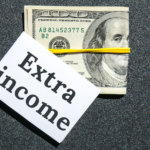
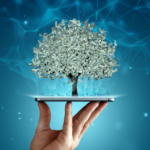


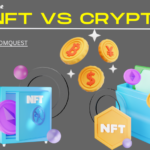






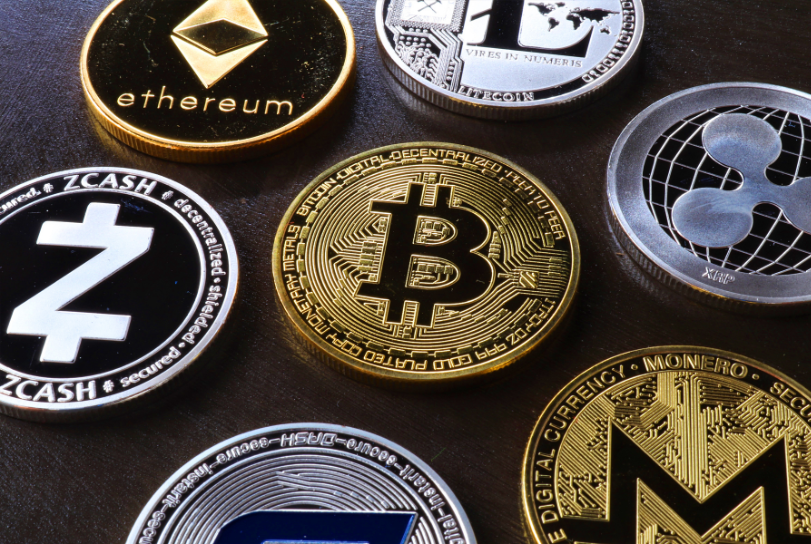

Leave a comment